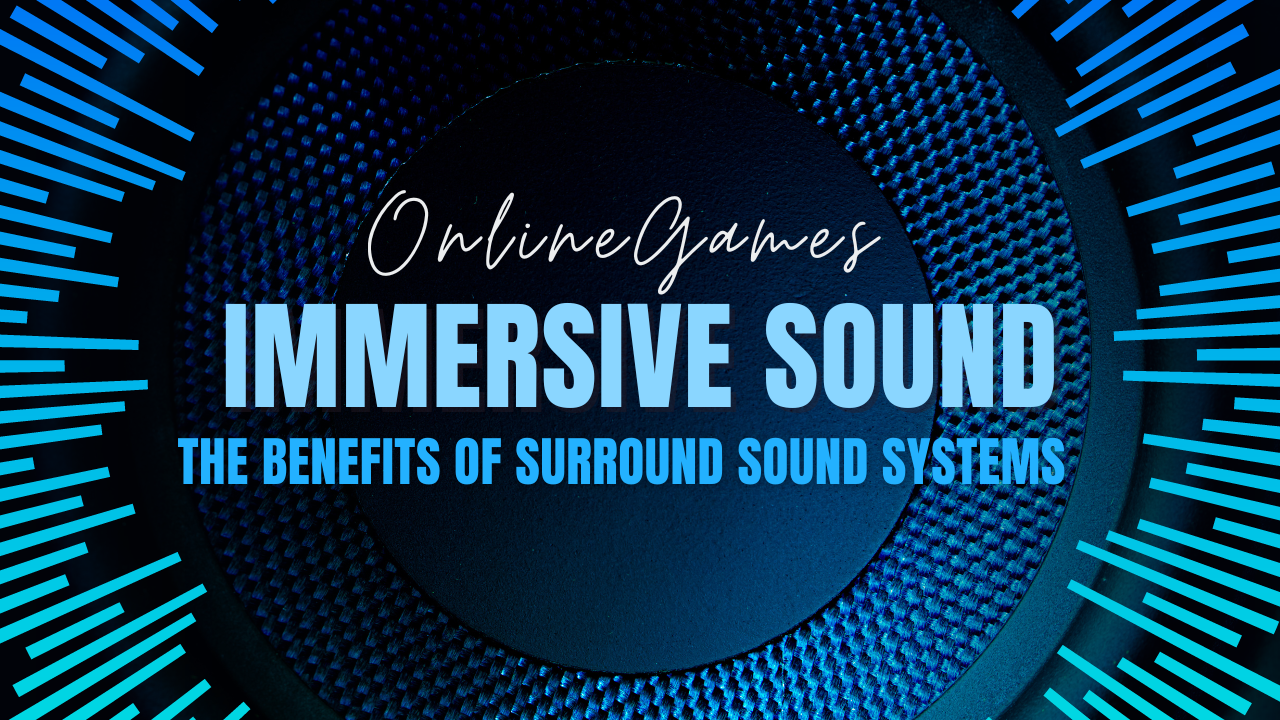Immersive sound is an integral part of creating a captivating audio experience, whether you’re watching movies, playing video games, or enjoying your favourite music. Surround sound systems play a crucial role in delivering this immersive audio experience, enveloping you in rich, multidimensional sound that enhances the overall enjoyment and realism of the content. This article explores the benefits of surround sound systems, how they work, and tips for setting up and maximizing their performance.
Understanding Surround Sound Systems
What is Surround Sound?
Surround sound refers to audio technology that creates a multidimensional sound experience by using multiple audio channels from speakers placed around the listener. Unlike traditional stereo sound, which uses two channels (left and right), surround sound systems incorporate additional channels to provide directional audio and spatial depth.
Components of a Surround Sound System
A typical surround sound system includes:
- Front Speakers: These speakers provide the primary audio channels for dialogue, music, and sound effects.
- Center Speaker: Positioned centrally, this speaker enhances dialogue clarity and anchors sound to the on-screen action.
- Surround Speakers: Placed to the sides or behind the listener, these speakers deliver ambient sounds, environmental effects, and spatial cues.
- Subwoofer: Handles low-frequency sounds (bass) to add depth and impact to explosions, music, and other effects.
Types of Surround Sound Systems
There are several types of surround sound systems:
- 5.1 Surround: This system includes five speakers (front left, front right, centre, surround left, surround right) and one subwoofer.
- 7.1 Surround: Adds two additional surround speakers for enhanced spatial accuracy and immersion.
- Dolby Atmos: An advanced surround sound technology that adds overhead speakers or up-firing speakers to create a more three-dimensional audio experience.
Benefits of Surround Sound Systems
1. Enhanced Immersion and Realism
Surround sound systems replicate the way sound is heard in real life, providing a more immersive and realistic audio experience. You’ll feel like you’re in the middle of the action, whether it’s a car chase, a concert, or a battle scene.
2. Spatial Accuracy and Directional Audio
Surround sound systems create spatial accuracy by placing speakers strategically around the listener. This allows for precise localization of sound effects, dialogue, and music, enhancing the overall clarity and depth of the audio.
3. Enveloping Soundstage
By distributing sound across multiple channels, surround sound systems create a wide and enveloping soundstage. This makes the audio experience more engaging and dynamic, pulling you deeper into the content.
4. Improved Dialogue Clarity
The centre speaker in a surround sound system is dedicated to dialogue, making speech clearer and more intelligible. This is particularly beneficial in movies and TV shows where dialogue clarity is essential for understanding the plot.
5. Dynamic Range and Impact
Surround sound systems reproduce a wide dynamic range, from subtle whispers to thunderous explosions. The subwoofer enhances low-frequency effects, delivering powerful bass that adds impact and realism to movies, games, and music.
6. Versatility Across Entertainment Media
Whether you’re watching movies, playing video games, or listening to music, a surround sound system enhances the enjoyment of all types of content. It adapts to different genres and formats, providing a consistent and high-quality audio experience.
Setting Up Your Surround Sound System
1. Room Layout and Speaker Placement
- Optimal Speaker Placement: Position front speakers at ear level when seated, ideally forming an equilateral triangle with the listening position. Surround speakers should be placed slightly behind and to the sides of the listener.
- Center Speaker: Place the centre speaker directly above or below the screen, ensuring it is aligned with the front left and right speakers.
- Subwoofer Placement: Experiment with subwoofer placement to achieve balanced bass throughout the room. Corners or along the front wall are common locations.
2. Calibration and Configuration
- Receiver Setup: Use your AV receiver’s setup menu to configure speaker distances, levels, and crossover frequencies. Many receivers offer automatic calibration tools for simplified setup.
- Sound Modes: Experiment with different sound modes (e.g., Dolby Digital, DTS
) to find the best settings for your content and personal preferences.
3. Acoustic Treatment and Room Considerations
- Room Acoustics: Enhance sound quality by adding acoustic panels, rugs, and curtains to reduce echoes and improve clarity.
- Ambient Light: Minimize ambient light sources to enhance viewing and listening experiences, especially for movies.
Maximizing Your Surround Sound Experience
1. Quality Content Sources
- High-Resolution Audio: Stream or play content in high-resolution formats such as Dolby TrueHD or DTS-HD Master Audio for the best audio fidelity.
- 4K Blu-ray Discs: Opt for 4K Blu-ray discs with immersive audio tracks to experience movies of the highest quality.
2. Regular Maintenance and Upgrades
- Equipment Maintenance: Clean speakers and components regularly to ensure optimal performance. Check and replace cables if necessary.
- Software Updates: Keep your AV receiver and playback devices up to date with the latest firmware for improved compatibility and features.
Investing in a surround sound system offers numerous benefits, from enhanced immersion and realism to improved dialogue clarity and dynamic range. Whether you’re a movie enthusiast, a gamer, or a music lover, a well-configured surround sound setup can transform your entertainment experience. By understanding the components, benefits, and setup considerations outlined in this guide, you can create a home audio environment that brings your favourite content to life with stunning clarity and depth.










